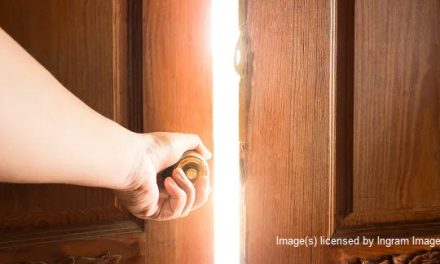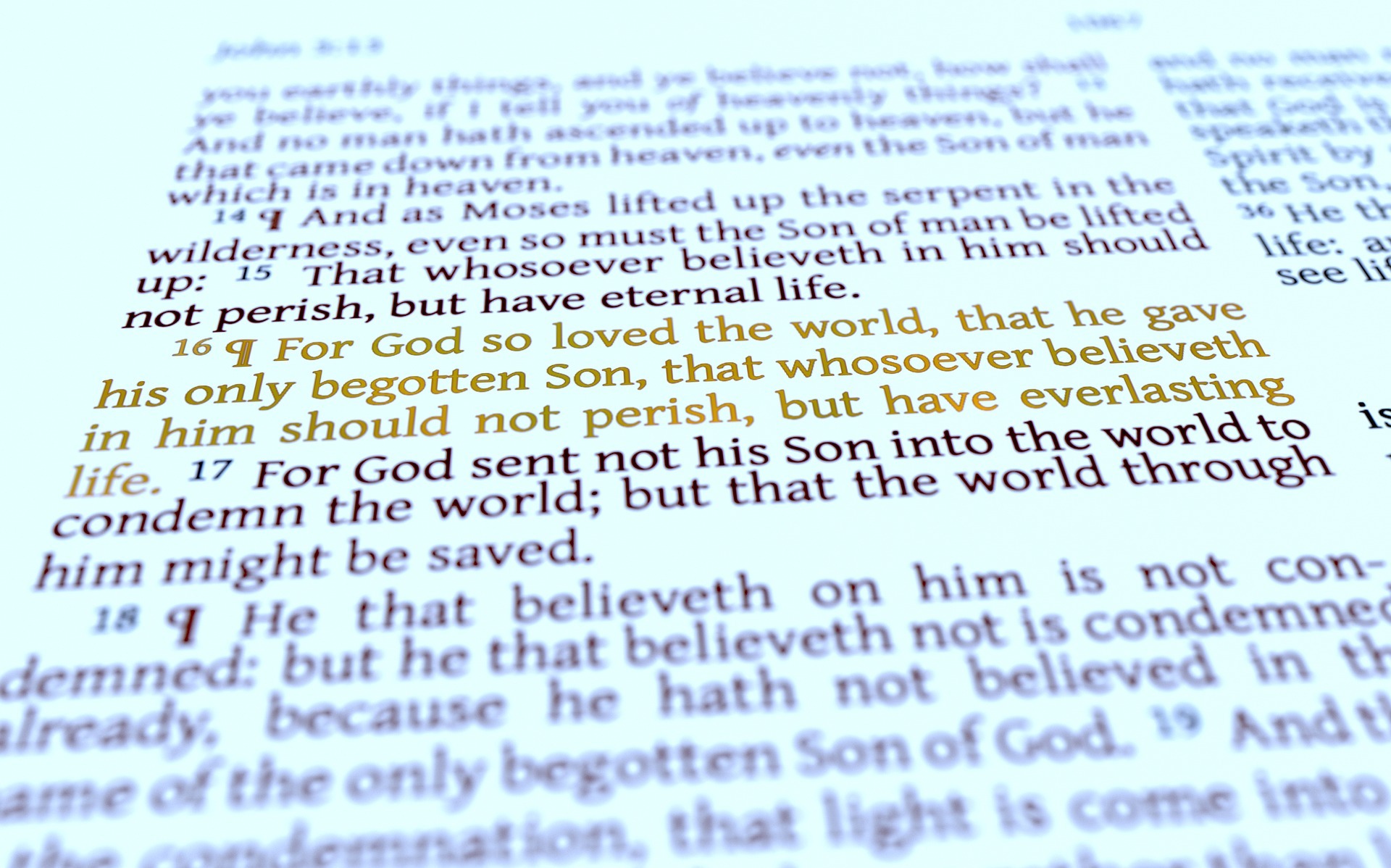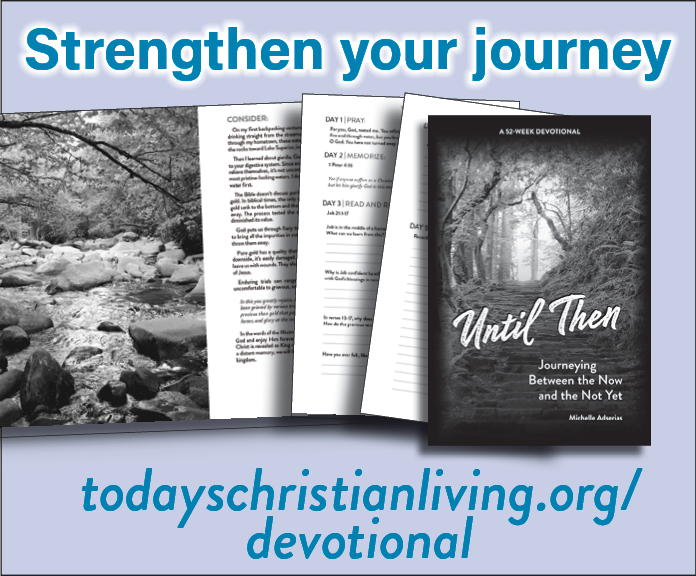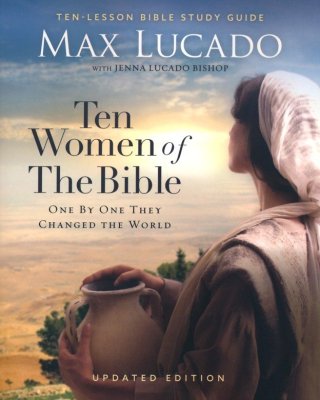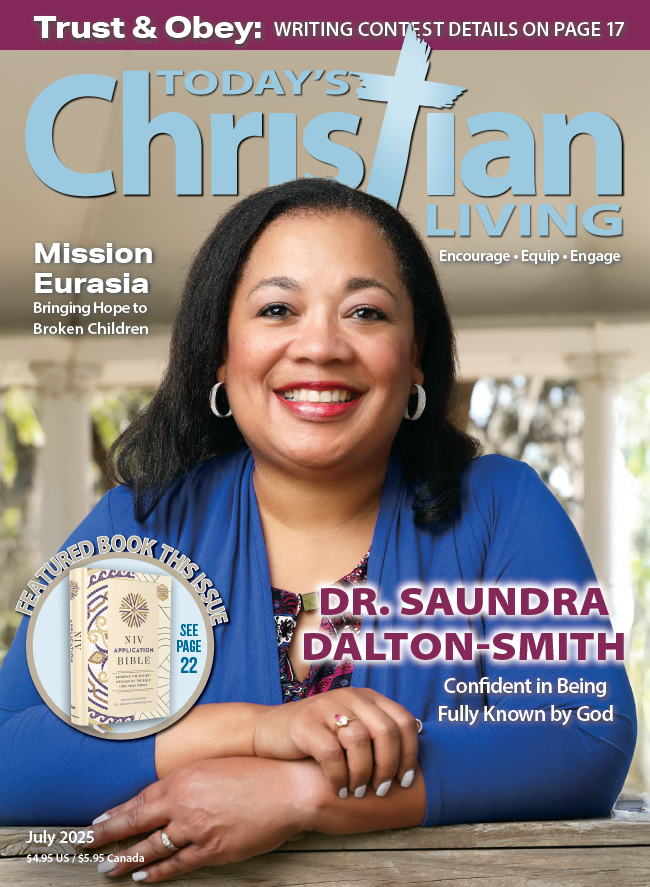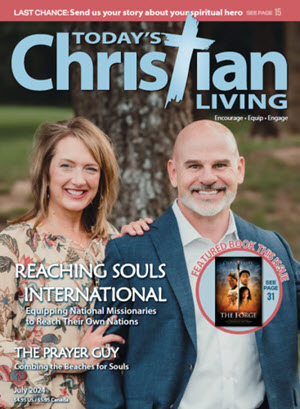I could hardly believe it. After twenty years of living at least half a continent away from each other, my dearest childhood friend, Sonja, and I would finally be living in the same neighborhood again. After years of missionary work in Europe and ministry elsewhere in Canada, Sonja, her husband, Brian, and their children were moving back to Calgary.
I first met Sonja when I was ten, and we were inseparable from that point forward. When we grew up and got married, she was my maid of honor, and I was hers. At my wedding reception, I introduced her with several lines from “Seasons in the Sun,” a song by Terry Jacks that was popular then—specifically, the verse that reminisces about the joys of childhood friendships and the shared lessons of life and love learned in that season.
Shortly after our marriages, our paths diverged. And it wasn’t until August 2000 that we were together again.
But there was a problem.
Struck by Cancer
During Sonja’s second pregnancy, thirteen years prior to our reunion, she had developed a pesky cough that wouldn’t go away. The doctors suspected pneumonia. After performing some tests, they delivered some good news: Sonja was carrying twins. They also delivered some bad news: Sonja had cancer—specifically, a very aggressive cancer called non-Hodgkin’s lymphoma.
She and Brian were stationed in Germany at the time, and because the doctors couldn’t guarantee the effectiveness of the treatment protocol on a pregnant woman, they scheduled her for an abortion. Sonja and Brian both refused, and they brought their family back to Calgary, where she underwent aggressive chemotherapy, even though the doctors weren’t sure how it would affect her unborn babies. Their speculation about deformities and other severe birth defects challenged Brian and Sonja’s faith daily as Sonja endured the treatment and its side effects.
But the treatment seemed to be working. The twins were born three months premature, and, while they faced profound breathing problems and other issues common among preemies, they were otherwise healthy and whole. Immediately after the twins’ cesarean birth, Sonja’s radiation treatment began.
Only months after Sonja and her family returned to Germany, the cancer came back. So, it was to Canada again for further chemo, followed by a bone marrow transplant. The treatment was successful, in that Sonja was cured of cancer—yet the treatment also resulted in complications that now posed a new risk to her cancer-free body.
I met Sonja halfway through the school year in fifth grade at Mapleridge Elementary School, when she moved to the area with her family. I remember thinking that my new classmate looked very grown-up and very, very, groovy. Her hair was long, styled in a wavy shag, and her blue eyes peered somewhat shyly through her oval wire-rimmed glasses. She wore denim hip-huggers and a macramé belt. She was tall and curvy; I was skinny and, well, skinny. I was very impressed by this cool new girl, and I wanted to be her friend. So, I introduced myself. And our lives were forever changed.
A few weeks later, we were standing outside the school, talking, as usual, until we had to part ways. We couldn’t walk home together because Sonja lived to the west of the school, while I lived to the east. That day, Sonja told me that her parents were getting a divorce. I felt sad for my friend. I couldn’t imagine how I’d feel if my parents decided to separate.
Kindred Spirits
I started inviting my new friend to attend various church activities with me, including girls’ club, camp, and Sunday school. Sonja seemed happy to oblige, and it wasn’t long before she made the decision to become a follower of Jesus. Faith in God was just one more thing we had in common. Beyond our shared interest in boys and books and clothes and music— and our mutual, lack of athletic prowess—we now shared the unique bond of those who have given their lives to Jesus. What had been a close friendship became much more. We were, in the words of L. M. Montgomery’s character Anne of Green Gables, “kindred spirits.”
As Sonja’s parents’ divorce was finalized, Sonja’s mom, Bonnie, decided that she wanted to get away from Calgary—away from her ex-husband, away from the memories, just away. She decided to move with her three girls to Lethbridge, a city about two hours south. Sonja and I were devastated. We couldn’t bear the thought of not seeing each other every day. We moped and we mourned.
Heartbreaking News
And then, the house across the street from mine went up for sale.
My bedroom window overlooked that brown bungalow, and I’ll never forget the day Sonja and I knelt together at that window and prayed to God that Sonja would live in that house instead of moving to Lethbridge.
The next phase of our plan was to march up to the door of the house, knock, and request entrance, to find out whether it would be a suitable home. (We needed to gather some ammunition for our argument to Sonja’s mom if we hoped to convince her that she should move six blocks away rather than leave the city altogether.) I can only imagine what the homeowner across the street thought when two twelve-year-old girls showed up to talk real estate.
A Change of Plans
The house was all wrong for Bonnie and her three girls. It had only three bedrooms, the basement had not been finished, and, most significant, it wasn’t located in Lethbridge. Still, I knew it was meant for Sonja and her family.
Bonnie bought the house. To this day, I don’t know what made her change her mind and make such a radical change of plans. It must have had something to do with our childlike faith in a great God who loves to give good gifts to His children. For I can think of no greater gift in those early years of adolescence than having my best friend close by. Besides my family, Sonja was my whole world. To this day, I can’t imagine what my teenage years might have been like without her.
Living so close also meant that when I went to church, Sonja came, too. When my parents dragged me to girls’ club, I dragged Sonja to girls’ club; if I went to Bible camp, so did she. It was through these contacts that she learned to love God with her whole heart, grew a strong faith, and met a young man named Brian—with whom she eventually fell head-over- heels in love.
It was okay that I wasn’t popular at school. It was okay if I was mocked for taking a stand when my faith demanded it. It was okay to say no to peer pressure. Because, at the end of the day, Sonja was still my friend; I always had someone to walk home with. Cool or uncool, cheerful or ill-tempered, succeeding with flying colors or failing miserably, I knew Sonja loved me for who I was, and I returned her unconditional love.
A Test of Loyalty
Our loyalty faced occasional challenges. When we were approaching our graduation from ninth grade (long before Sonja met Brian), Sonja secured a date to the festivities—a boy she’d met in band. I had no such prospects. Unwilling to leave such an important match up to chance, I mustered my courage and invited a high-school boy named John, whom I knew only slightly from church but had admired from afar.
He must have been flattered, because he agreed to go. Soon after, we started dating. Of course, everywhere I went with John, Sonja came along, because wherever there was a Donna, there was a Sonja, too.
Somewhere along the line, however, John’s affections shifted. It turns out that I was the third wheel, not Sonja, and I didn’t even know it. When I was on vacation, John made his interests known to Sonja, and they started spending time together.
Test Passed with Flying Colors
When I returned, the truth came out. Sonja admitted to having stolen “my” boyfriend. We talked about it—amazingly enough, without a lot of emotionalism or drama—and decided that no boy was worth jeopardizing our friendship. Sonja dialed his number, I picked up another receiver, and together we made a “Dear John” call. As cute as he was, our friendship was way more important.
At my wedding reception, when I introduced Sonja with those lyrics from “Seasons in the Sun,” I didn’t quote the line that came next. Now, it haunts me, because it’s basically a farewell to a dying friend.
During the summer months before Sonja’s return to Calgary, I had been studying the life of King David and was deeply touched by the biblical account of his final encounter with his best friend, Jonathan, who knew that he was about to die. In a moving scene of love, grief, loyalty, and commitment, Jonathan asked David to make a solemn promise: that when the battle was over and the dust had settled on his grave, David would take care of his family.
On Tuesday, September 19, I was on my way to see Sonja with the intention of making a similar promise to her. I knew her fragile body was failing fast, and I struggled to prepare myself emotionally for what I knew might be our last encounter this side of heaven. I stood in the main lobby of the Foothills Hospital, waiting for one of the six elevators to admit me. One set of doors opened, and out stepped Sonja’s mom, Bonnie, and her sister Paula. They were as surprised to see me as I was to see them, and we stood there, looking at each other, not sure what to say in such a heavy moment.
With Jesus
Finally, Paula broke the silence. “She’s gone!”
I stood there silently, trying to take it in.
I had missed my chance to say good-bye by mere moments.
Thankfully, I had been to see Sonja a few days prior. I had helped her outside into the sunshine. She’d always loved the sun. We’d talked and prayed together. I’d hugged her and told her I loved her. But there was so much more to say.
I had tried to see Sonja two more times before she passed away, but neither occasion was convenient; either the room had been full of relatives or doctors, or Sonja had been taken elsewhere for tests. We never got to say all there was to say—to laugh at all our old jokes, to smile at all our long-held secrets, to relive all our precious memories. I wish I’d had the maturity when we were teenagers, or the sensitivity later, when the miles came between us, to tell her just how much she had always meant to me.
Losing Sonja was like having the core of my childhood ripped out of me. That sensitive, silly young girl still living somewhere deep inside of me feels such a profound sense of loss.
Yet, in other ways, I have not lost Sonja at all. I would not be who I am today if it hadn’t been for her. I would not enjoy the rapport I do with other women. The close connection I had with Sonja has become the standard, the template, for every friendship I’ve formed since knowing her—the foundation of empathy and trust on which all of my relationships have been built.
Thank you, Sonja, my friend.
A Place Especially Made for Friends
Many sad days have followed Sonja’s death. There are sad moments still. And there are moments that are bittersweet, such as watching Sonja’s son Michael and my daughter Kendall—best friends since childhood—fall in love. And then, when they got engaged, seeing Kendall wear Sonja’s engagement diamond set in a new ring. There was the moment Brian clutched Darlene’s hand as Randy walked Kendall down the aisle, and the moments when we all paid tribute to Sonja during the reception that followed. There is the joy of knowing that Mike and Kendall are taking our story of friendship into the future. But, more than that, there is the solace of knowing that Sonja is with her best friend, Jesus, and that she is more whole, alive, and content than she ever was on earth. There is the joyful assurance that we will see her again, in Sonja’s words, “in a place made especially for friends.”
Excerpt from Friend Me: Turning Faces into Lasting Friendships, ©2013 by Donna Carter; used by permission, Whitaker House, www.whitakerhouse.com.

